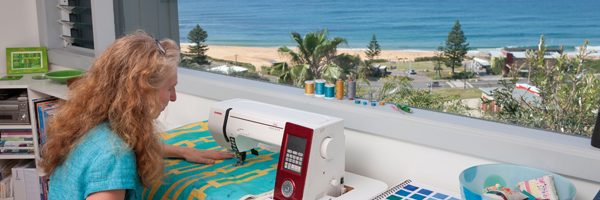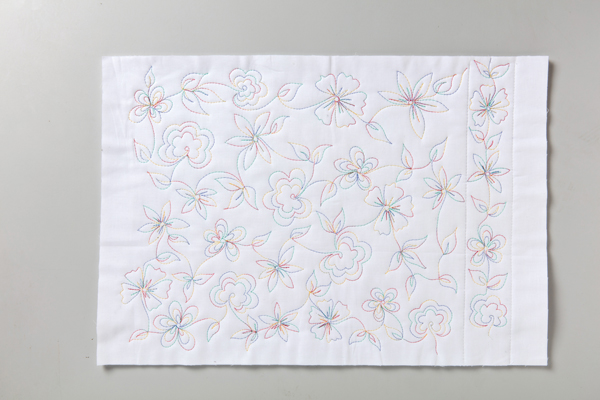
How To: Spring Flowers Free-Motion
What wonderful inspiration for your domestic machine quilting — all those beautiful shapes nature provides for us. I would like to share with you some of my go-to designs for free-motion quilting, sashing and borders for floral quilts.
By Deborah Louie
These patterns are all continuous, using the free-motion quilting technique. The flowers are soft, pretty, and all are different. That’s the beauty of domestic machine quilting — it’s the quilter moving the fabric herself. No computers, no following a line, nothing drawn — just all free-form. Therefore each flower is unique; each time you sit at the machine the quilting will be a littler different. This is actually very liberating, knowing that you are creating a one-of-a-kind piece.
I will show you how to stitch each flower step-by-step. Personally, I hand-draw patterns for a while before stitching them.
To set up your machine, you need a free-motion darning foot, feed dogs on the machine and a stitch length of zero. I have used polyester thread in the top and the bobbin. As I am using white fabric, the batting is 100 per cent polyester by Matilda’s Own — Oh Sew Soft — to keep the fabric nice and white. In free motion quilting the needle goes up and down and you slide the fabric under the needle to achieve the pattern.
I always start by ditch stitching all the seams on my quilts first. This is important to keep the quilt strong, flat and secure. It also highlights the piecing beautifully. When quilting sash designs, make sure you don’t skip this step. Ditch the seams either side of the sashing and your quilt will not pleat and pucker — the design in the sashing will really be a feature on your quilt. When quilting borders, I ditch the inner seams and then a big long basting stitch on the outside edge of the border where the binding will later be stitched. This stops the three layers from shifting and puckering. This is a little bit of extra work but ensures successful border quilting.
Deborah Louie shows you an easy way to create a trapunto cushion!
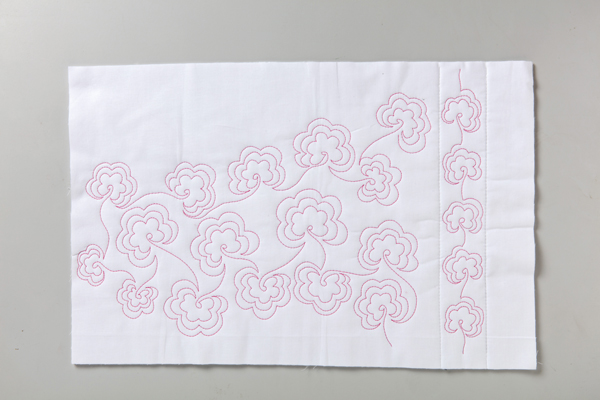
The first flower I will show you is Rose Blooms.
- Begin with small close stitches to anchor the stitching. Then stitch a long soft curved arm shape, then hook and stop with the needle down in your work.
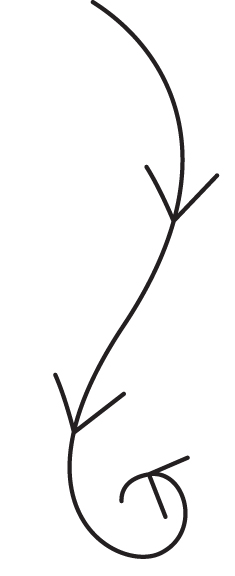
2. Work five soft small petal shapes in a clockwise direction.
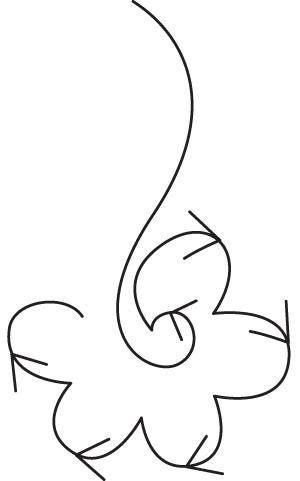
3. Shadow the same shapes on the outside in an anti-clockwise direction.
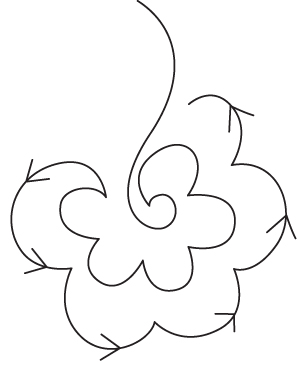
4. Then work a final time around the rose in a clock-wise direction.
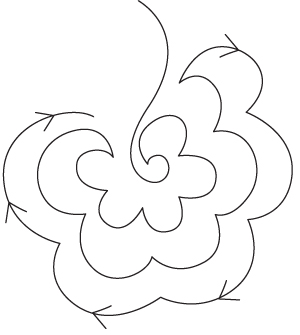
5. Shoot off with a new long soft curved arm shape, either down the work for sashing or across the fabric for a border design. Repeat the Rose Blooms.
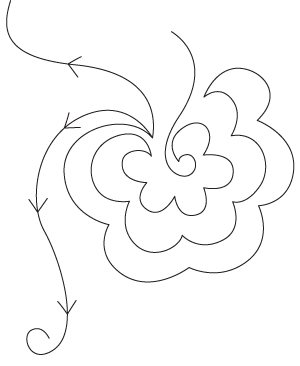
When stitching in a sashing, try to fill the space, leaving say 1/8in of space between the rose and the ditched seam. I call this “breathing space”. Try not to over fill the space as this makes it crowded and messy — less is best when it comes to a sweet simple repeating pattern.
If you are quilting a border I suggest you use my DPQ (Deborah’s Quilting Plan) method. This is a simple approach to quilting anything that is now in a straight line. First, work across the right-hand side of the border. Then come down say 3in and work back to the left. Then repeat across, down etc.
If you follow this method, you never cross over and you never get yourself into a hole you can’t get out of. I don’t travel across exactly straight — I move a little irregularly so the naked eye can’t see the DQP at all. Give it a try.
Learn raw-edge machine applique using decorative stitches with Deborah Louie!
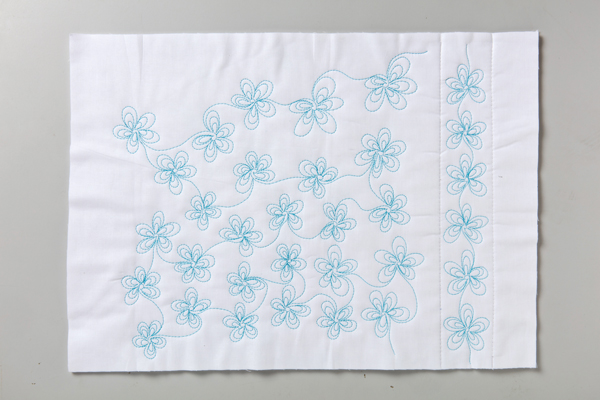
The second flower is Loopy Daisy.
This is a very pretty pattern that looks sensational with variegated thread. Easy and very forgiving indeed.
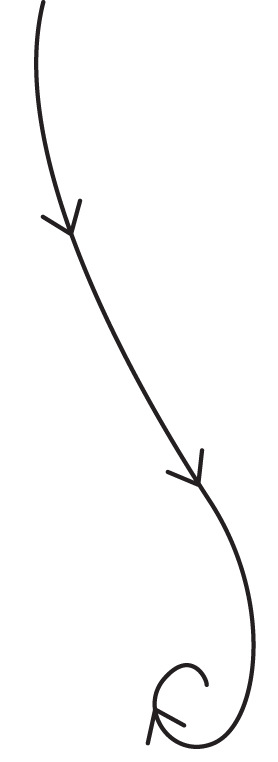
- Begin with small close stitches to anchor the stitching. Then stitch a long soft curved arm shape, then hook and stop with the needle down in your work.
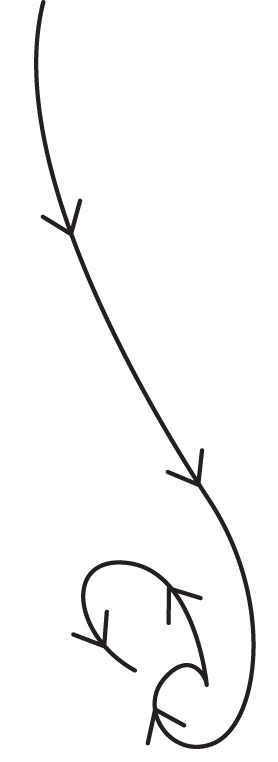
2. Stitch one horseshoe shape in an anti-clockwise direction.
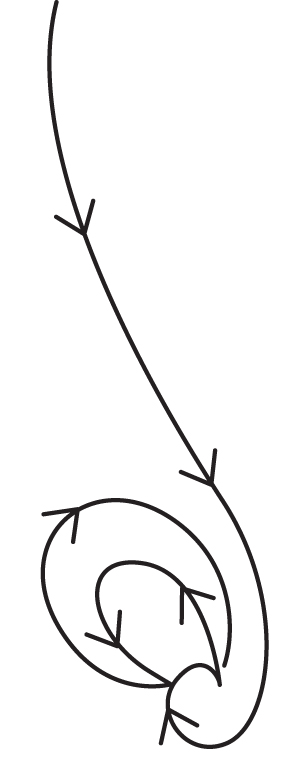
3. Shadow the same shapes on the outside working in a clockwise direction.
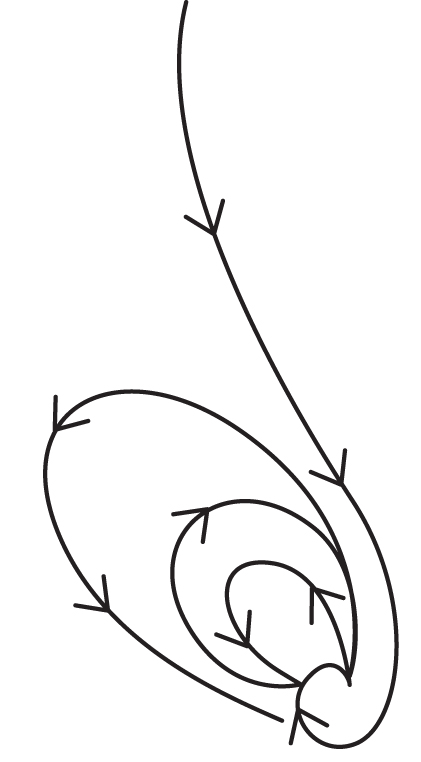
4. Work the final row of stitching in an anti-clockwise direction to make three rows of stitching.
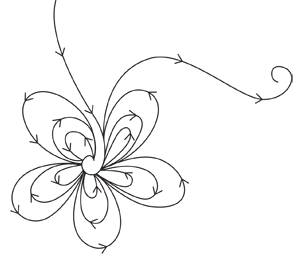
5. Move onto the next petal and work it in the same way. Continue until you make five petals in total.
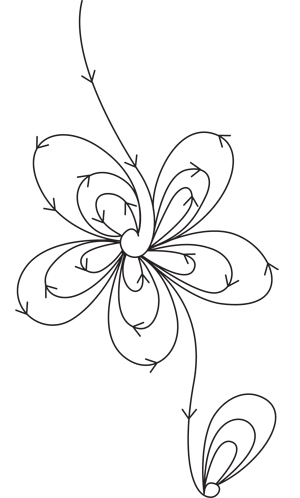
6. Shoot off with a new long soft curved arm shape, either down your work for sashing or across the fabric for a border design. Repeat the Loopy Daisy.
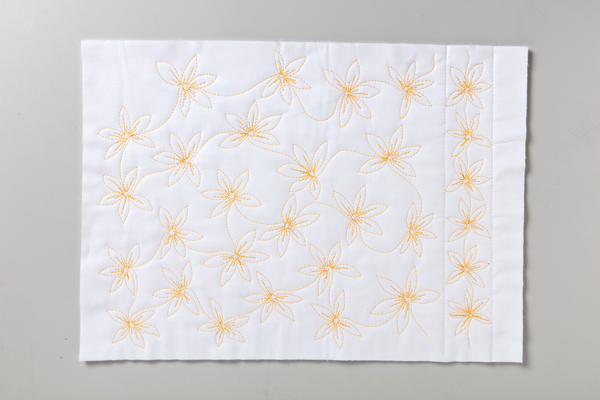
The third flower is the Frangipani Flower.
This is a very cute design on quilts for young ladies. I have completed some line work inside the completed flower to add texture.

- Begin with small close stitches to anchor the stitching. Stitch a long soft curved arm shape, then hook and stop with the needle down in your work.
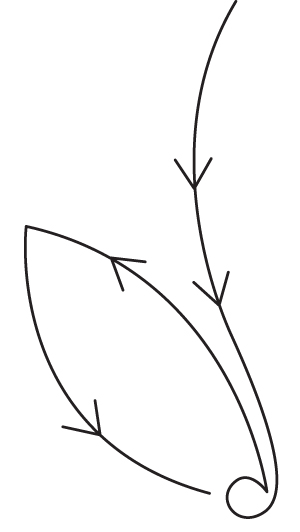
2. Stitch a petal going out, working to a point at the top, then stitch back into the centre again, working in an anti-clockwise direction.
3. Repeat this petal shape a further four times.
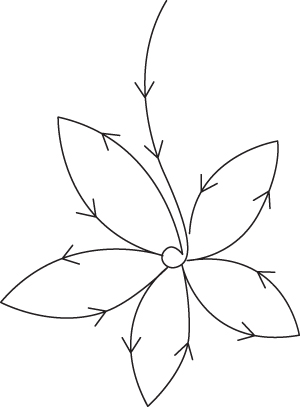
4. Starting at petal number one, add several lines of straight stitching in and out from the centre.
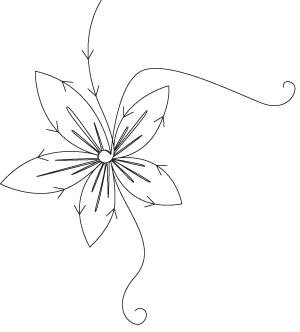
5. Shoot off with a new long soft curved arm shape, either down your work for sashing or across the fabric for a border design. Repeat the Frangipani Flower.
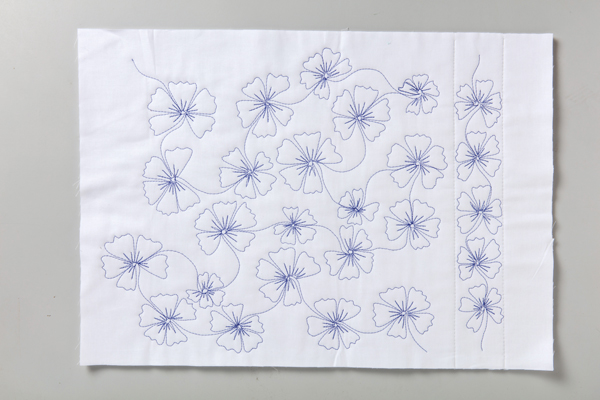
Deborah Louie takes you through fabric cutting, piecing and domestic machine quilting in this online class!
The final design is the Sweet Blossom. This one is easy and relaxed. Don’t worry if the petals all look different — it simply adds to the charm.
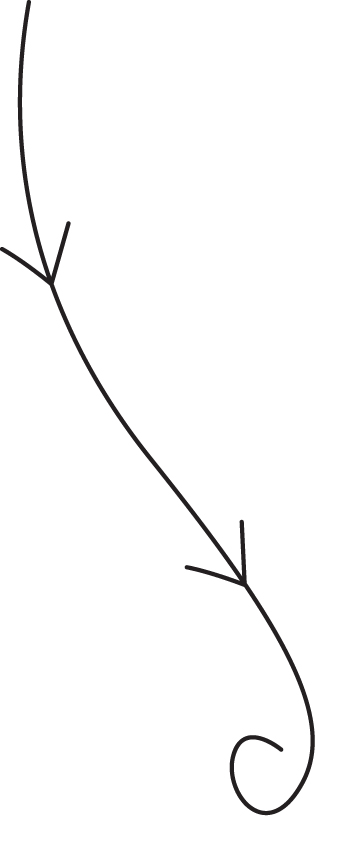
- Begin with small close stitches to anchor the stitching. Stitch a long soft curved arm shape, then hook and stop with the needle down in your work.
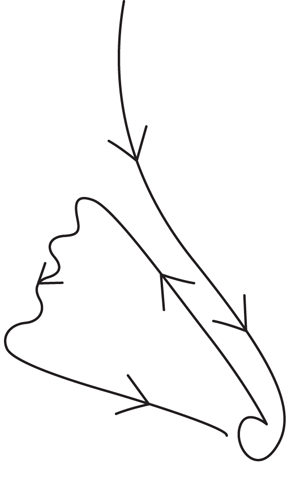
2. Working in an anti-clockwise direction, stitch the straight edge of the petal moving out from the centre, stitch a wiggly line at the outer edge and then stitch a straight line back to the centre.
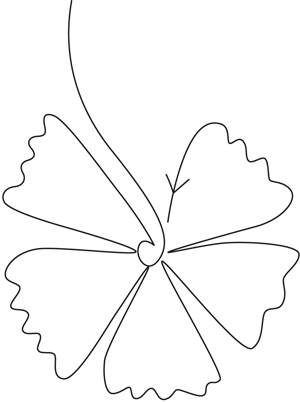
3. Repeat this petal shape a further four times.
4. Starting at petal number one, add several lines of straight stitching in and out from the centre.
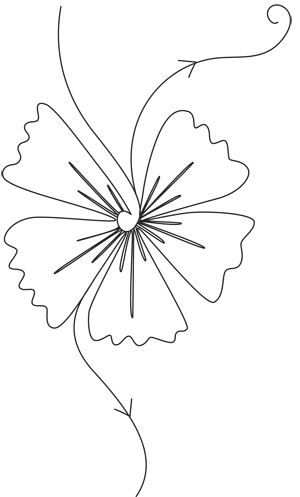
5. Shoot off with a new long soft curved arm shape, either down your work for sashing or across the fabric for a border design. Repeat the Sweet Blossom.
In the final quilted sample in variegated thread, I have added a very easy leaf and combined all the flowers together. To create the leaf design:

1. Begin with small close stitches to anchor the stitching. Stitch a long soft curved arm shape, then stop with the needle down in your work. There is no hook on this pattern.

2. Stitch a small loop up.

3. Stitch the first side of the leaf down.
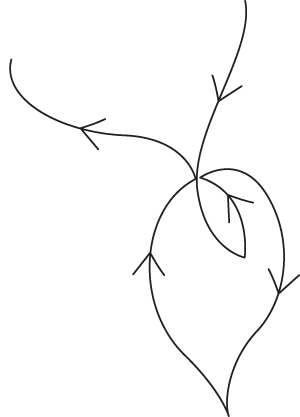
4. Then stitch up the other side of the leaf and shoot off in another direction.

I have just meandered from one flower design to the next using my DQP method, adding leaves to fill in the spaces where necessary. This makes a very happy and relaxed border quilting design.
Visit Deborah’s website deborahlouie.com.au


